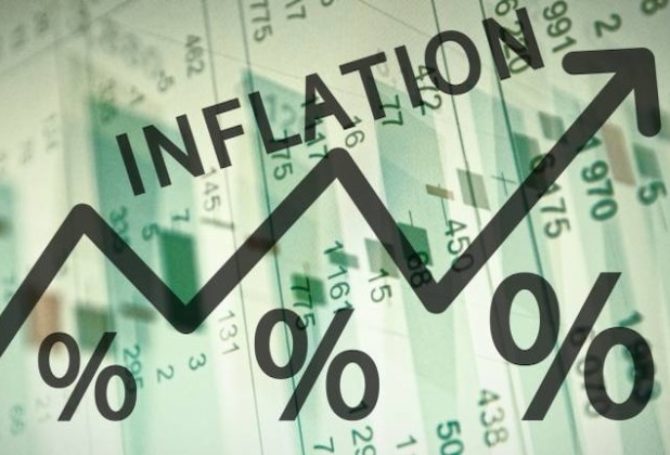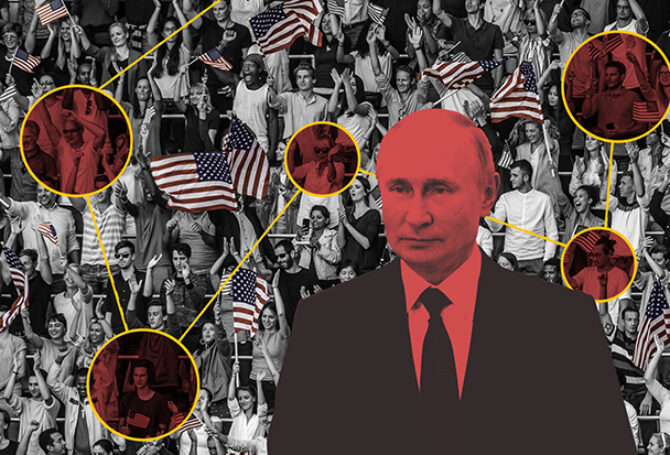
Inflation is a dirty word in politics. Voters can forgive a lot, but they tend to be unforgiving toward political leaders who preside over inflated prices for gas, food and Christmas presents.
It doesn’t matter politically if spiking inflation isn’t the result of a specific policy. The person in charge gets the blame and faces the political consequences. That pretty much sums up the situation facing President Biden, whose approval rating has been sinking as inflation was rising. A fresh Washington Post/ABC News poll shows 55 percent of respondents blame Biden for rising prices.
Biden may not have caused inflation, but voters will judge him based on whether he make it disappear.
First, some economic statistics. The current upswing in inflation began last fall and has continued to accelerate, hitting a 30-year high of 6.2 percent in October. The inflation rate began exceeding 2 percent, the rate the Federal Reserve Bank views as optimal, in March and risen steadily since then.
Voters connect inflation to higher prices they pay. For example, the price of meat, poultry, fish and eggs has jumped by more than 10 percent from a year ago, affecting checkout at grocery stores and tabs at restaurants. Gas and heating oil prices are up. So are prices for cars and trucks, home goods, clothing and medical care. The faint good news is that the Consumer Price Index for airline tickets and alcoholic beverages declined slightly in October.
Fed Chair Jerome Powell has characterized the current round of inflation as transitory, a surge in consumer demand outpacing supply from industry that is slower to return to pre-pandemic production. The demand/supply imbalance has been aggravated by unprecedented supply chain bottlenecks, which have stranded goods at ports, in containers and on trucks.
60 Minutes carried a segment featuring a Christmas gift merchant who smartly anticipated bottlenecks and ordered his goods early. His story is the quintessential story of supply chain bottlenecks:
A Chinese manufacturer was six weeks late in fulfilling the order because of COVID-19 lockdown protocols. The ship bringing the goods to the United States was forced to lay off the Port of Long Beach for several weeks. When the ship finally docked and the merchant’s containers were unloaded, they sat in storage because no trucks were available to convey them because of a driver shortage. As more cargo was unloaded at the Port, newer containers were stacked on top of earlier-arriving containers. The stacks of containers continued to pile up, while the merchant’s warehouse remained empty. To top off his misery, the merchant was billed by the Port for the storage of his marooned containers.
Import bottlenecks also affect US exports. After finally unloading their containers, many ships are rushing to return to China and other Far East stops to pick up new loads without waiting to load containers filled with US exports. Milk producers estimate shipping bottlenecks have generated $1 billion in losses in the first six months of this year because of lost export business and higher inventory and shipping costs, which has contributed in turn to higher domestic prices for milk products.
The inability of companies to hire enough workers – or hold onto the ones they employ – has complicated economic recovery. Recurring waves of COVID-19 in various parts of the nation and a polarized debate over vaccination and masks added more instability. Workers have used their newfound leverage to gain higher wages and more benefits, another source of inflationary pressure. Labor statistics indicate US labor and unemployment rates have nearly returned to pre-pandemic levels. Employers are struggling to replace millions of workers Americans who retired during the pandemic and entice women who have delayed returning to work because of continuing concern over COVID-19 and the absence of available or affordable childcare.
The US inflation rate hasn’t reached the levels experienced in Argentina, Turkey, Brazil and Russia, but it has exceeded the rates in Germany, France, Italy, Canada and the United Kingdom. The US and Mexico are in a virtual inflationary tie. China’s inflation rate as of October 21 was 1.5 percent, but that was double its rate in September. Inflation appears to be infectious as supply and demand issues affect the global economy.
There has been no shortage of finger-pointing. Congressional Republicans have blamed excessive federal spending for overheating the economy and overly generous jobless benefits for employee return-to-work tardiness. Political conservatives have criticized vaccination and mask mandates as impeding economic recovery, even though a faster-than-anticipated economic recovery is an underlying reason for inflationary pressures.
Powell and many economists say federal spending has spurred economic recovery faster than anticipated, resulting in inflation caused by supply lagging demand. Pulling back might have caused – or still might cause – a worse problem than inflation. In response to inflation, the Fed is beginning to tighten monetary policy and has signaled possible interest rate increases as early next year.
Critics fault Biden and congressional Democrats for being too passive in the face of inflation, focusing instead on physical and human infrastructure spending legislation. Biden seems to have gotten the memo and is taking steps to unsnarl kinks in the supply chain. He convinced the Port of Long Beach in California, America’s largest import port, to add a third shift to speed clearing a backlog that has cargo ships anchored for weeks waiting for a berth and piles of shipping containers filling every square foot of storage on the docks.
Many supply chain bottlenecks will take longer to fix. For example, the semiconductor shortage is global in nature and tied to a surge of demand for electronics, appliances and cars. The concentration of wafer and chip manufacturing in Asia adds a further wrinkle to the supply chain challenge. Other shortages – from aircraft to production facilities – limit how much new supply can be produced in the short term to cool inflation.
Biden’s core policy response to overcome the pandemic downturn – and now to counter inflation – is to promote growth. It might seem counter-intuitive that you can outgrow inflation, but that appears to be Biden’s ace in the hole. Economists predict the growth in US Gross Domestic Product this year will reach 6 percent. You don’t have to look any further than the stock market, which continues to advance, as a sign that a pro-growth response to inflation may be the winning ticket economically.
Critics fault Biden and congressional Democrats for being too passive in the face of inflation, focusing instead on physical and human infrastructure spending legislation.
The question is whether it will be the winning ticket politically. That will get its first test in next year’s midterm elections, when economists predict the inflation rate will drop to 2.6 percent and go even lower in 2023. That prediction assumes key drivers of higher prices such as airline tickets and new and used cars will subside. Economists say core personal consumption expenditures, which include food and fuel, could settle into an inflationary range between 2.2 and 3.2 percent next year. However, housing values and rents are likely to remain inflated as the shortage of affordable housing units and the increased cost of construction materials persist through 2022.
Which party controls Congress for the last two years of Biden’s presidential term may hinge on how voters feel about inflation and its effects. If inflation is still raging, they are likely to be angry and vote accordingly. Voters, especially those who vote for Democrats, also may be angry if economic recovery and new job creation falters next year. The election is set up to pit Biden’s pro-growth spending agenda against calls to trim spending in hopes that will curb inflation.
Partisans on both ends of the political spectrum will stick with their teams, so the issue is where political independents and swing voters will line up. State election results in Virginia and New Jersey suggest middle voters will vote for political change. Biden and congressional Democrats must prove that their short- and long-term infrastructure investments will sustain post-pandemic economic growth. They also must hope those supply chain bottlenecks get unsnarled quickly to relieve inflationary pressure.




